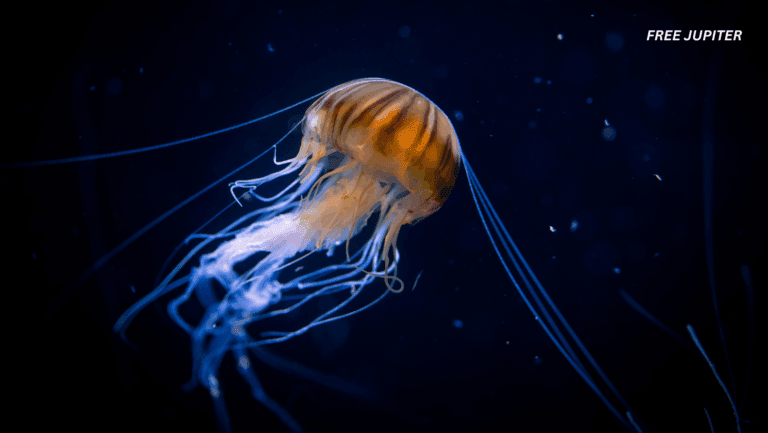Friendly Note: FreeJupiter.com shares general info for curious minds 🌟 Please fact-check all claims—and always check health matters with a professional 💙
You might not think twice before shooing away a buzzing dragonfly—or worse, swatting it. But before you commit insecticide, consider this: that shimmering little flyer may be your best natural defense against a swarm of bloodthirsty mosquitoes. With aerial agility, underwater ambush tactics, and a hunger for pests at every life stage, dragonflies are nature’s unsung mosquito control agents—and they’re ridiculously good at it.
In fact, killing just one dragonfly might mean inviting over 100 mosquito bites to your next outdoor gathering.
Let’s explore why these ancient insects, often dismissed as garden decorations, are quietly saving your skin—literally.
🦟 Dragonflies: Nature’s Elite Mosquito Hunters
Dragonflies aren’t just decorative wings on a summer day. These insect acrobats are precision predators. Adult dragonflies feast on flying pests with deadly accuracy, catching mosquitoes midair like nature’s own fighter jets. On a good day, one dragonfly can chow down on 30 to 100 mosquitoes—not bad for something that fits in your hand.
But that’s only half the story. Long before they ever fly, dragonflies spend most of their lives as underwater nymphs—also called naiads—lurking in ponds, puddles, and wetlands. In this larval stage, they hunt mosquito larvae, tadpoles, and even tiny fish with speed and stealth. They breathe through gills in their rear ends (yes, rear-powered respiration is a thing) and even jet-propel themselves by shooting out water.
In short: dragonflies wage a two-front war on mosquitoes—from below the surface and above it.
Read more: Scientists Say More Animals Are Conscious Than We Ever Imagined—Even Insects
📊 Science Confirms Their Superpowers
A massive scientific analysis reviewed 31 studies across 14 countries, covering 47 species of dragonfly and damselfly larvae. These studies looked at how effective these predators were against nine major mosquito species—including the ones responsible for spreading dengue, malaria, Zika, yellow fever, and West Nile virus.
The numbers are striking:
- On average, a single larval dragonfly can eat 40 mosquito larvae per day.
- That translates to a 45% reduction in mosquito larvae populations—within just 24 hours.
- This feeding rate held steady across all mosquito species and life stages studied.
And unlike chemical foggers or bug sprays, dragonflies don’t need batteries, don’t cost a dime, and don’t pose a threat to pollinators or your lungs.
🧬 They’ve Been at It Since the Age of Giants
Dragonflies are not newcomers to this battle. Their ancestors, known as griffenflies, soared through prehistoric skies over 300 million years ago, with wingspans stretching over 2.5 feet. While today’s dragonflies are smaller, their skill set has only improved with age.
Their evolution has gifted them with unmatched flying ability. Each of their four wings operates independently, allowing them to hover, glide, dive, or reverse in an instant. Clocking in at speeds up to 35 miles per hour, they can chase, catch, and consume prey mid-flight.
It’s no wonder robotic engineers are studying them to design next-gen flying machines.
Read more:This New AI Translates Your Cat’s Meows Into Human Language—With 95% Accuracy!
👁️ Super Vision + Super Brains
Dragonflies don’t just look cool—they literally see the world in a way we can’t imagine. Each compound eye has up to 30,000 lenses, offering a nearly 360-degree field of view. They process visuals at around 200 frames per second, which is about ten times faster than the human eye. Nearly 80% of their brain power is dedicated to vision alone.
This makes them terrifyingly efficient hunters. Studies show dragonflies catch up to 95% of the prey they target. That’s a better kill rate than most apex predators.
They also exhibit a rare trait called selective attention—the ability to focus on one target while ignoring distractions, something even humans struggle with.
🌍 Guardians of Clean Water
Dragonflies are also indicators of a healthy ecosystem. They only lay eggs in clean, still water—so if you see them around, it’s a sign your pond or wetland is in good shape. On the flip side, their absence might hint at pollution, pesticide runoff, or habitat destruction.
Their presence means your environment is doing well. And that means fewer mosquitoes—and possibly fewer diseases.
✈️ Globe-Trotting Insects
Think dragonflies stick close to home? Think again. Some species, like the globe skimmer, travel over 11,000 miles across oceans and continents—the longest insect migration on Earth. Others migrate shorter distances with surprising precision, navigating with cues still not fully understood by scientists.
They’re not just neighborhood defenders. Some are global travelers.
💘 Drama in the Dragonfly Dating World
Dragonfly romance is as intense as their hunting skills. Males often claim territories around water sources and fight off rivals. When a female enters, the male snatches her mid-air with specialized claspers, forming a heart-shaped mating posture called the “mating wheel.” Sometimes, they even mate while flying.
It’s equal parts bizarre and poetic.
🏡 Want Fewer Mosquitoes? Host a Dragonfly Army
Encouraging dragonflies to settle in your backyard or community can make a real dent in mosquito populations—without chemicals or gadgets.
Here’s how to roll out the welcome mat:
- Create a clean water feature like a small pond.
- Avoid using pesticides or herbicides.
- Add aquatic plants like water lilies or reeds to support egg-laying and hunting.
- Keep the water still—no filters or fountains.
Think of it as a five-star mosquito-eradication base camp.
Read more: Scientists Discover Animals Have a Mysterious ‘Sixth Sense’, Changing Evolutionary Theories
🌟 Final Thought: A Tiny Insect, A Huge Impact
At first glance, dragonflies might seem like just another winged curiosity in the blur of backyard life—a flicker of color above the pond, a brief shimmer in the sky. But don’t let their delicate appearance fool you. These ancient insects carry an outsized ecological role, and their presence—or absence—can ripple across entire ecosystems in ways we’re only beginning to fully appreciate.
Dragonflies are more than just efficient mosquito hunters; they are barometers of environmental health. Their life cycles are intricately tied to clean water, balanced food chains, and stable habitats. When they’re thriving, it usually means everything else is, too. And when they vanish, it’s often a warning sign—an early red flag that something in the local environment has gone off-kilter.
What makes them even more remarkable is how quietly they do their work. No fanfare, no buzz of technology—just thousands of years of refined instinct. They don’t need charging stations or plastic packaging. They just need water, native plants, and space to do what they’ve done for millions of years: hunt, breed, and keep nature in check.
In a time when we often look to flashy solutions for big problems—like climate change, pollution, or disease—it’s easy to forget the power of small, silent forces already working on our behalf. Dragonflies are one of those forces. Supporting them doesn’t require a science degree or an environmental grant. It simply asks for awareness and a little effort: protect their habitats, reduce chemical use, and let the natural world breathe.
In return, you’ll gain not just fewer mosquitoes and a more balanced ecosystem—but a deeper connection to the wonder and wisdom of the wild.
Because sometimes, the most profound impacts come from the tiniest wings.










